Photostory: Khiam Detention Camp
By Arjan El Fassed, The Electronic Intifada, 30 October 2004
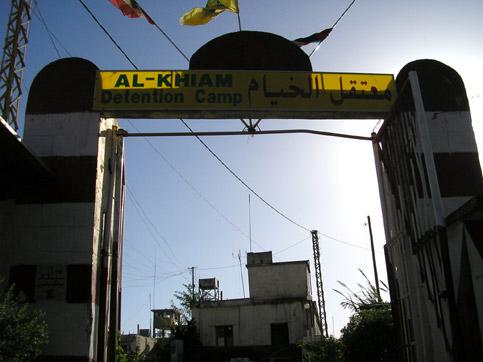
Al-Khiam detention camp is built on a hill overlooking the town
of Khiam.
Inside a complex first built by the French in the 1930s,
new detention
and interrogation facilities have been built. (Arjan
El Fassed)
Khiam prison was a detention and interrogation camp during the years
of the Israeli occupation of southern Lebanon. From 1985 until the
Israeli defeat in May 2000, Lebanese and Palestinian detainees were
held in Khiam without trial. Most of them were brutally tortured -
some of them died.
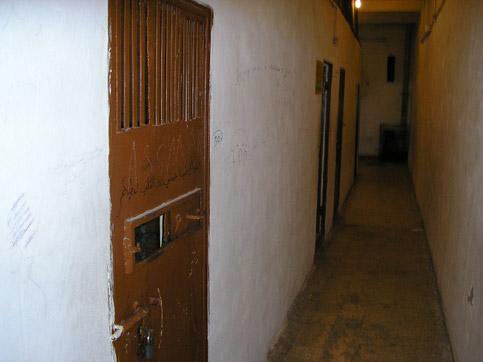
There are cells whose only light comes through ventilation holes in
the
ceiling, isolation cells, interrogation rooms and communal
cells. (Arjan El Fassed)
Soon after the Israeli withdrawal from South Lebanon, the guards of
the notorious Khiam prison fled, leaving the prisoners free. Men,
women and children had been held in appalling conditions.
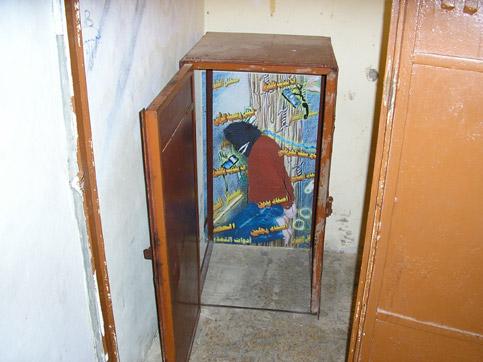
The prison was also equipped with a row of punishment cells so small
that it was only possible to sit in them but not lie down. Prisoners
would be left in these for up to ten days at a time. (Arjan El
Fassed)
The detention camp is now empty. The prisoners' testimonies and the
cells bear witness to what went on inside. Prisoners were crammed
into tiny, filthy spaces where they ate and slept. Those not in
solitary confinement were allowed out once a week for 15 to 30
minutes in the "sun room" and open space surrounded by walls.
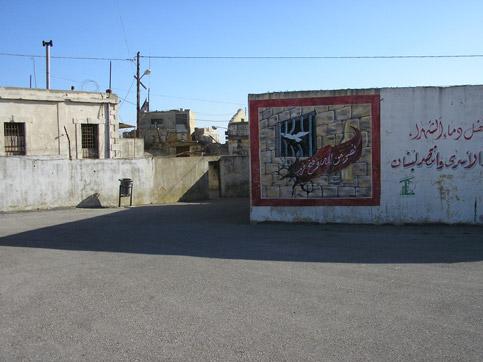
For the first period of detention, for between 10 days and two
months,
prisoners were usually held in solitary confinement in a
cell 90cm by 90cm
in which it was impossible to stand or lie, and to
sleep detainees had to sit
with their feet on the wall. (Arjan El
Fassed)
Prisoners have been routinely tortured, three times a day. Torture
included beatings, being prodded with electrical cables in sensitive
parts of the body and being hung from painful positions.
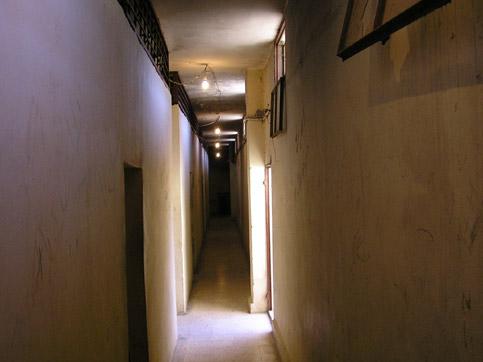
Detainees were given inadequate food rations and beaten when they
prayed
until a riot in 1989, during which two prisoners, Bilal
al-Salman and Ibrahim
Abu 'Azz, were killed. (Arjan El Fassed)
Among the prisoners were Lebanese journalist Cosette Ibrahim,
kidnapped while reporting in southern Lebanon. Some of the detainees
were children, like 15-year-old Ali Tawbeh, who with his parents was
dragged from his home by the Israeli occupation forces in 1997.
Other hostages, like Abdeh Malkani, were over seventy years old.
Hussein Awada, 65 years old, had been detained since June 1999. He
had serious heart problems and could only move with the help of a
stick.
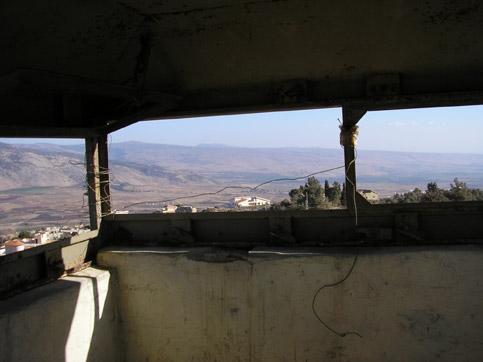
Prisoners were allowed outside for 15 minutes every one or two
weeks. (Arjan El Fassed)
Israel ran the prison using the militia they had created, the South
Lebanese Army. The Khiam detention centre was set up by the Israelis
in 1985. They were directly in charge of it until 1987, when they
handed control over to their allies, the SLA, while still pulling
the strings. They provided the training for the torturers and lead
the torture sessions. They paid the salaries and provided all the
equipment.
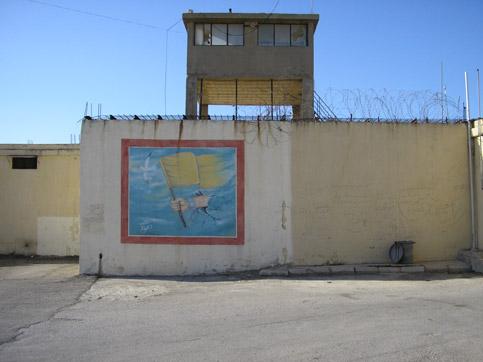
Khiam detention camp succeeded Ansar detention camp in southern
Lebanon as the main interrogation and detention centre of the SLA in
south Lebanon. (Arjan El Fassed)
Pressure from the International Committee of the Red Cross to visit
the Khiam centre forced the SLA to improve detainment conditions.
However, it took a year before they allowed the ICRC to inspect the
prison in January 1995.
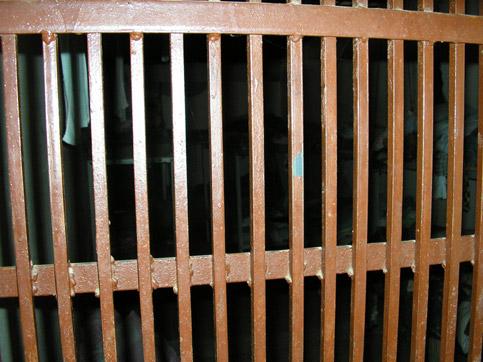
The torture methods reportedly included electric shocks; suspension
from poles, usually with only the toes touching the ground; beating,
sometimes after the body is doused in water; and threats of rape of
wives and female relatives. (Arjan El Fassed)
Between 1987 and 1995 prisoners in Khiam were not allowed access to
their families. They were denied the right of prompt judicial review
of the lawfulness of their detention. A number of detainees have
died in Khiam, some of them after torture, others because of lack of
medical treatment. Other prisoners have been released after years of
torture and incommunicado detention with serious physical or mental
illnesses.
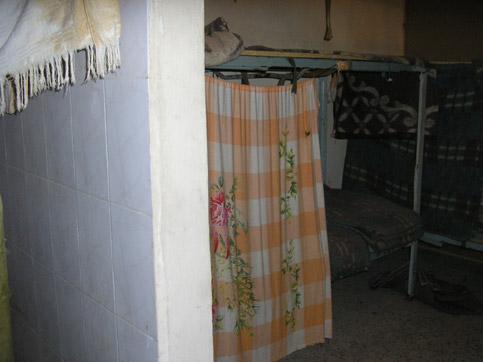
After the Israeli withdrawal, residents of Khiam village stormed the
detention centre and released all remaining 144 detainees. (Arjan El
Fassed)
In May 2000, when Israel withdrew from Lebanon, many of Khiam's
guards and interrogators fled across the border among the six
thousand members of the South Lebanese Army and their families who
took refuge in Israel, living under Israeli government protection at
the expense of the Israeli taxpayer.
"When a Jew, in America or in South Africa, talks to
his Jewish companions about 'our' government, he means the
government of Israel."
- David Ben-Gurion, Israeli Prime Minister

Viva Palestina!
Latest Additions
- in English
What is this Jewish
carnage
really about? - The background to
atrocities
Videos on Farrakhan, the Nation of Islam and Blacks and Jews

How Jewish Films and Television Promotes bias Against
Muslims
Judaism is Nobody's
Friend
Judaism is the Jews' strategy to
dominate non-Jews.
Jewish War Against
Lebanon!
Islam and Revolution
By Ahmed Rami
Hasbara -
The Jewish manual
for media deceptions
Celebrities bowing to their Jewish masters

Elie Wiesel - A Prominent False Witness
By Robert Faurisson
The Gaza atrocity 2008-2009

Iraq - war and occupation
Jewish War On
Syria!
CNN's Jewish version of "diversity"
- Lists the main Jewish agents
Hezbollah the Beautiful
Americans, where is your own Hezbollah?
Black Muslim leader Louis Farrakhan's Epic Speech in Madison Square
Garden, New York
 - A must see!
- A must see!
"War on Terror" -
on Israel's behalf!
World Jewish Congress: Billionaires, Oligarchs, Global Influencers for Israel
Interview with anti-Zionist veteran Ahmed Rami of Radio Islam
- On ISIS, "Neo-Nazis", Syria, Judaism, Islam, Russia...
Britain under Jewish
occupation!

Jewish World Power
West Europe
East Europe
Americas
Asia
Middle East
Africa
U.N.
E.U.
The Internet and
Israeli-Jewish infiltration/manipulations
Books
- Important collection of titles
The Judaization of
China
Israel: Jewish Supremacy in Action
- By David Duke
The Power of Jews in France
Jew Goldstone appointed by UN to investigate War Crimes in Gaza

The best book on Jewish Power
The Israel Lobby
- From the book
Jews and Crime - The archive
Sayanim - Israel's and Mossad's Jewish helpers abroad
Listen to Louis Farrakhan's Speech
- A must hear!
The Israeli Nuclear Threat
The "Six
Million" Myth
"Jewish History"
- a bookreview
Putin and the
Jews of Russia
Israel's attack on US warship USS Liberty
- Massacre in the Mediterranean
Jewish "Religion" - What is
it?
Medias
in the hands of racists
Strauss-Kahn - IMF chief and member of Israel lobby group

Stop Jewish Apartheid!
The Jews behind Islamophobia
Israel controls U.S. Presidents
Biden, Trump, Obama, Bush, Clinton...
The Victories of Revisionism
By Professor Robert Faurisson
The Jewish hand behind Internet
The Jews behind Google, Facebook, Wikipedia,
Yahoo!, MySpace, eBay...
"Jews, who want to be decent human beings, have to renounce being Jewish"
Jewish War Against Iran
Jewish Manipulation of World Leaders

Al Jazeera English under
Jewish infiltration

Garaudy's "The Founding
Myths
of Israeli Politics"
Jewish hate against Christians
By Prof. Israel Shahak
Introduction to Revisionist
Thought
- By Ernst Zündel
Karl Marx: The Jewish Question
Reel Bad Arabs
- Revealing the racist Jewish Hollywood propaganda
"Anti-Semitism" - What is it?
Videos
 - Important collection
- Important collection
The Jews Banished 47 Times in 1000 Years - Why?
Zionist
strategies
- Plotting invasions, formenting civil wars, interreligious strife,
stoking racial hatreds and race war
The International Jew
By Henry Ford
Pravda interviews Ahmed Rami

Shahak's
"Jewish History,
Jewish Religion"
The Jewish plan to destroy the Arab countries
- From the World Zionist Organization
Judaism and Zionism inseparable
Revealing photos of the Jews 
Horrors of ISIS Created by Zionist Supremacy
- By David Duke
Racist Jewish Fundamentalism
The Freedom Fighters:
 Hezbollah
- Lebanon
Hezbollah
- Lebanon
 Nation of Islam
- U.S.A.
Nation of Islam
- U.S.A.
Jewish Influence in America

- Government, Media, Finance...
"Jews" from
Khazaria stealing the land of Palestine
The U.S. cost of supporting Israel
Turkey, Ataturk and
the Jews

The truth about the Talmud
Israel and the Ongoing Holocaust in Congo
Jews DO control the media -
a Jew brags!
- Revealing Jewish article
Abbas - The Traitor
Protocols of Zion
- The whole book!

Encyclopedia of the
Palestine Problem
The
"Holocaust" - 120 Questions and Answers
Quotes
- On Jewish Power / Zionism
Caricatures / Cartoons

Activism!
- Join the Fight!











































